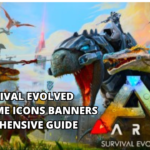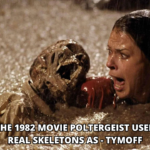Halo: Combat Evolved, released in 2003, is more than just a game; it’s a landmark in the gaming industry. One of the aspects that set it apart was its detailed and iconic visual design, including Halo (2003) game icons banners. These elements played a crucial role in the game’s identity and user experience. In this article, we’ll explore the various game icons and banners of Halo (2003), delving into their history, design, and lasting impact.
History of Halo (2003)
Halo: Combat Evolved was developed by Bungie and released by Microsoft Game Studios. It quickly became a defining title for the Xbox console, known for its engaging storyline, revolutionary gameplay mechanics, and impressive graphics for its time. The game’s reception was overwhelmingly positive, earning critical acclaim and a massive fanbase. Its success laid the foundation for one of the most beloved franchises in gaming history.
Understanding Halo (2003) game icons banners
Halo (2003) game icons banners are visual elements used to represent various aspects of a game, such as achievements, modes, and events. These elements are not just decorative; they serve functional purposes, aiding in navigation, enhancing the user experience, and contributing to the game’s overall aesthetic.
Types of Halo (2003) game icons banners
Main Menu Icons: These icons help players navigate through the main menu, representing different options like campaign mode, multiplayer, settings, and more.
In-Game HUD Icons: The heads-up display (HUD) includes icons for health, shields, ammo, and objectives, providing essential information at a glance.
Achievement Banners: These banners appear when players unlock achievements, offering visual rewards for their in-game accomplishments.
Multiplayer Mode Icons: Icons in multiplayer mode indicate various game types, player statuses, and team affiliations.
Promotional Banners: Used in marketing materials, these banners promote the game and its updates, featuring key imagery and taglines.
Design Elements of Halo (2003) Icons
Visual Aesthetics: The icons in Halo (2003) are designed with a futuristic, military-inspired look, reflecting the game’s sci-fi theme.
Color Schemes: A consistent color palette of greens, blues, and metallics is used, creating a cohesive visual identity.
Symbolism and Meaning: Icons often incorporate symbols like the UNSC emblem, Spartan helmets, and weapons, each carrying specific narrative and cultural significance.
Design Elements of Halo (2003) Banners
Artistic Styles: Banners combine realistic artwork with stylized elements, creating visually striking designs.
Key Imagery: Key characters, vehicles, and scenes from the game are frequently featured, making the banners instantly recognizable.
Typography and Text Placement: Text on banners is carefully placed to ensure readability while complementing the overall design.
Iconography and Symbolism in Halo (2003)
Common Symbols and Their Meanings: Symbols like the UNSC logo, the Covenant insignia, and the Master Chief’s helmet are imbued with deep meaning, representing fractions, lore, and characters.
Cultural and Narrative Significance: These symbols help build the game’s world, providing players with visual cues that enhance the storytelling.
The Role of Icons in User Experience
Navigational Aids: Icons streamline navigation, helping players quickly find what they need in menus and during gameplay.
Enhancing Gameplay Immersion: Well-designed icons contribute to the immersive experience, making the game world feel more cohesive and engaging.
Visual Storytelling: Icons and banners are part of the game’s visual narrative, conveying important information and themes without words.
Banner Usage in Halo (2003)
Marketing and Promotions: Promotional banners are used in advertisements, on websites, and in other media to generate hype and attract players.
In-Game Events and Updates: Banners announce new content, events, and updates, keeping the community informed and engaged.
Community Engagement: Banners are also used to celebrate community milestones, showcase fan art, and highlight player achievements.
Icon and Banner Evolution Over Time
Changes from Original Release to Later Updates: Over time, icons and banners have been updated to reflect new content, improved graphics, and player feedback.
Influence of Player Feedback: The Halo community has had a significant impact on the evolution of these visual elements, with developers often incorporating player suggestions.
Comparisons with Newer Halo Titles: The design principles established in Halo (2003) have influenced subsequent games in the series, with each new title building on this legacy.
Creating Your Own Halo (2003) game icons banners
Tools and Software Recommendations: Programs like Adobe Photoshop, Illustrator, and free alternatives like GIMP are excellent for creating custom designs.
Basic Design Principles: Focus on consistency, readability, and thematic relevance to ensure your designs fit within the Halo aesthetic.
Step-by-Step Creation Guide:
- Conceptualize Your Design: Start with sketches and ideas based on the game’s themes.
- Choose a Color Palette: Stick to colors that match the Halo universe.
- Create Your Icons/Banners: Use layers and vector tools for precision.
- Refine and Test: Make adjustments for clarity and visual appeal.
Impact of Halo (2003) game icons banners on Gaming Industry
Influence on Other Games: The success and design of Halo (2003) game icons banners have inspired many other games to adopt similar approaches.
Contributions to Game Design Standards: Halo set new standards for visual design in games, influencing industry practices.
Cultural Significance: The game’s icons and banners have become cultural symbols, recognized even by those who haven’t played the game.
Notable Halo (2003) game icons banners
Iconic Designs and Their Backstories: Some designs, like the Master Chief’s helmet icon, have fascinating backstories tied to the game’s lore.
Fan Favorites: Certain icons and banners have become fan favorites due to their aesthetic appeal and significance.
Memorable Promotional Banners: Banners used in early promotions have become iconic, often nostalgically remembered by fans.
Community Contributions
Fan-Made Icons and Banners: The Halo community has created countless fan-made designs, showcasing their creativity and passion.
Modding Community Impact: Modders have expanded on the original icons and banners, creating new content that enhances the game.
Celebrating Fan Creativity: Bungie and 343 Industries have often highlighted and celebrated fan contributions, fostering a strong community bond.
Conclusion on Halo (2003) game icons banners
The Halo (2003) game icons banners are more than mere visual elements; they are integral to the game’s identity and legacy. They enhance the user experience, contribute to the game’s narrative, and have left a lasting impact on the gaming industry. As we look back at Halo’s influence, it’s clear that these designs will continue to inspire and engage players for years to come.
FAQs on Halo (2003) game icons banners
What makes Halo (2003) game icons banners unique? The unique blend of futuristic aesthetics, military themes, and cultural symbols sets Halo (2003) game icons banners apart, creating a distinctive and memorable visual identity.
How did the community influence Halo (2003) iconography? The community provided feedback and created fan-made content, which influenced updates and new designs, showcasing the developers’ commitment to engaging with their players.
Can I create my own Halo (2003) game icons? Absolutely! With tools like Photoshop or GIMP and a good understanding of Halo’s visual style, anyone can create custom designs inspired by the game.
What tools are best for designing game icons? Adobe Photoshop and Illustrator are industry standards, but free alternatives like GIMP and Inkscape are also excellent for creating high-quality icons and banners.
How have Halo (2003) game icons banners evolved over time? They have evolved through updates and player feedback, with newer Halo titles building on the original designs to enhance visual clarity and thematic consistency.









